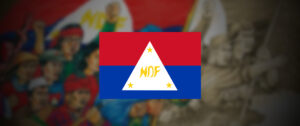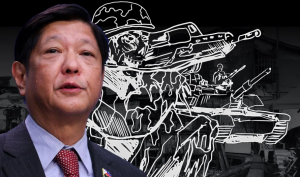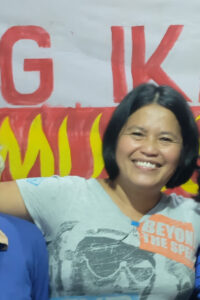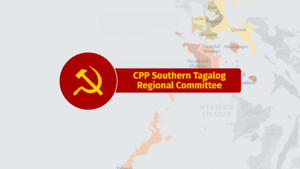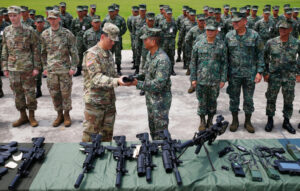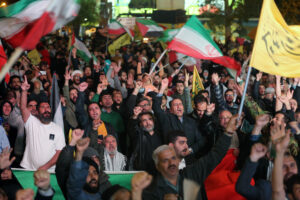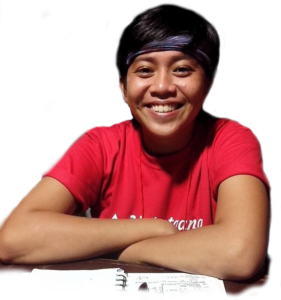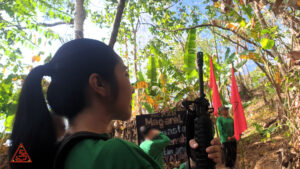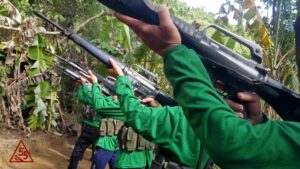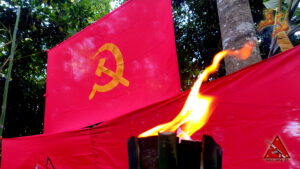Declare April 27, 2021 as National Day of Armed Valor
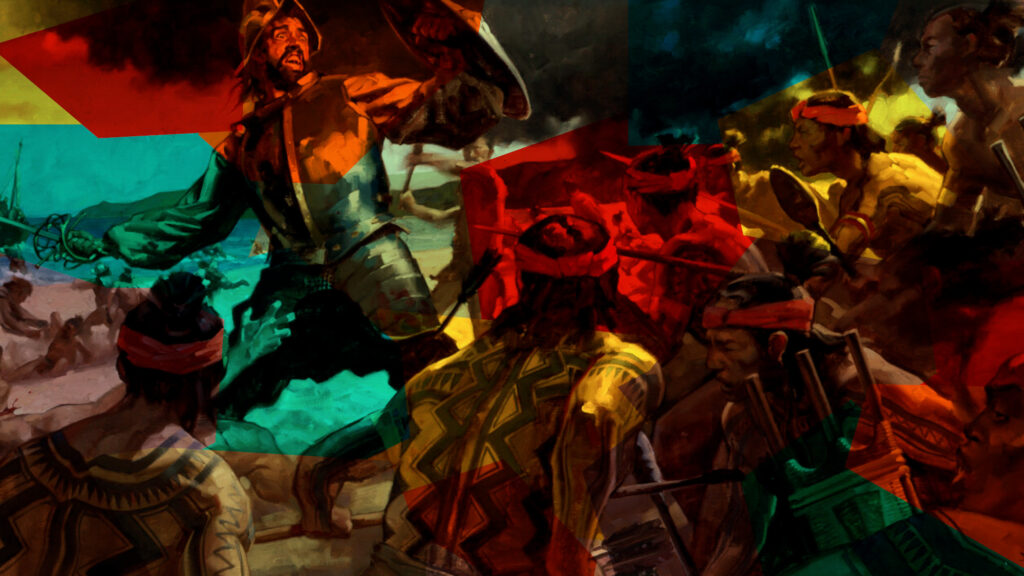
In line with the message of the Central Committee, we declare April 27, 2021 as National Day of Armed Valor. On the morning of that day, all units of the New People’s Army (NPA) are called upon to stand in formation and raise their weapons as a way of recalling the Battle of Mactan, exactly 500 years ago, and honoring Datu Lapulapu and the thousands of native Filipinos who fought and vanquished the armed contingent of Spanish colonizers led by Ferdinand Magellan.
The Battle of Mactan must be recalled as the day that the yet inceptive Filipinos stood valiantly and resisted the colonizers who sought to make them bow to their armed might and pay tribute to the Spanish king. Taking advantage of their numbers and mastery of the sea and land, Lapulapu along with more than a thousand armed fighters, rendered the enemy’s superior weapons and armor ineffective. Magellan’s cannons, muskets, crossbows and swords were no match to the arrows, wooden iron-tipped spears and krises of Lapulapu and his people. They fought with genius and valor, killed Magellan and drove the Spanish fleet away.
Through armed resistance, Lapulapu defended their land against the Spanish forces and traitors such as Humabon and Zula who bowed and served the colonizers. Although the Spanish aggressors eventually colonized, imposed an oppressive feudal order, and ruled the entire country for more than 300 years, Lapulapu’s valor inspired successive generations of Filipinos from the 16th to the 19th centuries to fight back with arms to resist colonial oppression and struggle for national freedom. Numerous armed revolts erupted across the entire archipelago.
At different times during the colonial period, Filipinos rose up in arms against the colonizers who grabbed their lands, demanded tribute, imposed high land rent and heavy taxes, exacted unpaid labor, seized crops and subjected the masses to cruel punishment. These revolts were invariably labeled as banditry and quelled brutally but would produce heroes of the Philippine revolution such as Lakandula, Rajah Sulayman, Palaris, Diego and Gabriela Silang, Francisco Dagohoy and tens of thousands of nameless others. They all were filled with the indomitable spirit of Lapulapu and his ardent desire to be free from foreign invaders.
From the scattered revolts of centuries, Filipinos ultimately raised their weapons and fought as one under the red flag of the Katipunan and the leadership of Andres Bonifacio. Rising as one nation, the Filipino people waged widespread guerrilla warfare against the Spanish colonial forces and liberated large parts of the country from foreign control. As the traitor Humabon bowed to Magellan, so did Aguinaldo and his band of rich illustrados who betrayed the Filipino people and surrendered to the American colonial forces, which in turn bought the Philippines as a colonial possession from Spain, and took away the nation’s freedom by force.
Driven by their desire for a free nation, Filipinos rose up against the American colonial regime. From Batangas to Balangiga (in Samar) and across the country, the Filipino people fought valiantly, even as they were brutally suppressed as “bandits” by the American forces armed with superior weapons. More than a million Filipinos died in the course of the armed resistance against the US colonial invaders, and as a result of disease and hunger during the war of suppression until the early 1900s.
The Filipino people’s valiant armed resistance would again surge forward under the leadership of the old Communist Party of the Philippines, established in 1930. The Party established the Hukbong Bayan Laban sa Hapon (Hukbalahap or the Anti-Japanese People’s Army) in 1942 to wage guerrilla warfare against the Japanese colonial forces in line with the anti-fascist united front policy promoted by the Third International. As in previous armed revolts, the Hukbalahap was mainly a peasant army that spread in the Philippine countryside and established organs of governance across Central Luzon and dispatched units in Manila, Southern Luzon, as far as Panay and other areas.
The old CPP and the Hukbalahap persevered in fighting the fascist Japanese forces even after the surrender of the US-led forces and withdrawal of American troops in 1942. American military forces returned in 1945 to reestablish their colonial power, staging bombing raids and treacherously attacking the Huk and mounting relentless counterguerrilla operations. Despite the determination and demand of the peasant masses to continue to wage armed resistance, the class collaborationist leaders of the old Party led the Huk (later the Hukbong Mapagpalaya ng Bayan or People’s Liberation Army) to the path of defeat and surrender to the US puppet regime, through outright surrender or military
adventurism.
It would take the establishment of the New People’s Army in 1969 to pick up the cudgels of Lapulapu and resume the Filipino people’s armed resistance for national and social liberation. Led by the CPP, reestablished in 1968 under the guidance of Marxism-Leninism-Maoism, the NPA brought the Filipino people’s armed resistance to levels and reach unprecedented in the country’s history. It aims to carry forward the new democratic revolution, under proletarian leadership, which is a continuation of the old type democratic revolution of the Katipunan imbued by the ideals of the bourgeois democracy.
For the first time, the Filipino people’s armed resistance spread throughout the entire archipelago. It adapted a clear strategic line of protracted people’s war to systematically build the people’s army, overcome in time the numerically and militarily more superior forces of the US-supported Armed Forces of the Philippines (AFP) and overthrow the class rule of the imperialists, big bourgeois compradors and big landlords.
Over the past fifty years, the New People’s Army raised the Filipino people’s banner of revolutionary armed resistance. Like the armed revolts of the past, the current revolutionary armed struggle takes the form of a war of the peasant masses against feudal exploitation and other forms of oppression. Organs of political power are being established across the country, serving as scaffolding for the democratic people’s government that will be established upon nationwide victory. The NPA has overcome the most brutal campaigns of counterrevolution and is determined to frustrate the current offensive under the tyrannical regime.
All the Filipino armed revolutionaries of the past, like the NPA, have been vilified by the ruling oppressors. They have been condemned as “insurectos” and “bandidos,” just as today they are reviled by those who exploit and feed on the people’s miseries. Indeed, if Lapulapu or any one of those who rose up in arms to defend the people’s dignity and the nation’s freedom were alive today, they too would be reviled as “terrorists” by those who fear and despise the armed masses.
The Filipino people’s aspiration for national liberation that drove generations upon generations over centuries to take up arms remains the key aspiration that rouses them to continue marching along the path of armed resistance. In fighting the imperialist giant and its armed tentacles, the Filipino people and their Red fighters draw inspiration from the armed valor of Lapulapu and their victory in the Battle of Mactan five hundred years ago. Imbued with the heroic spirit of all armed heroes of the past, the NPA and all the forces of the people’s democratic revolution are determined to carry forward the struggle to attain genuine and complete national freedom and democracy.

